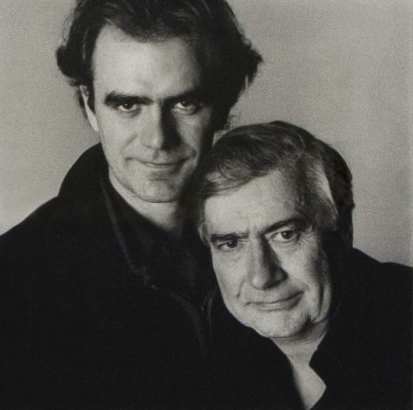A HISTORY OF 31 STUDIO
By Professor Chris Townsend
31 Studio was the first dedicated studio of its kind in the UK, and one of the first in Europe, to revive and specialise in the art of Platinum/Palladium printing, a photographic process that was hugely important at the end of the 19th and early 20th centuries.
William Willis had patented a viable Platinum process in 1873. His invention had become the chosen method of printing for some of the most eminent photographers at the end of the 19th century. This was especially true of Peter Henry Emerson, Edward Steichen and other members of the Secession Group such as Alvin Langdon Coburn, who claimed artistic status for their work. But later the use of Platinum went into decline and was seemingly forgotten by the 1920s.

When 31 Studio was established by the late Paul Caffell in London, in 1988, he had to learn the process virtually from scratch, from William Willis’s notebooks. “That was incredibly exciting”, Paul said. “I was retracing the original steps in the development of the process, getting a very real insight into what the process was capable of. I felt a strong affinity with Willis and what he’d wanted to achieve”. Help came in the shape of Borje Almquist, a Swedish photographer and printmaker, who was taking an MA at the Royal College of Art. It was Almquist who introduced Paul to the potential of adding Palladium to the process, varying the amount of Palladium to control the warmth of the tones within the print. A belief in the artistic potential of Platinum printing led the leading fashion photographer David Bailey to 31 Studio. Bailey’s interest in the Platinum process was matched by an increasing number of other photographers searching for a distinctive and sensitive means of printing their work. By the mid 1990s this led to an expansion of 31 Studio’s business, when Paul’s son Max joined. Subsequently, 31 Studio has always embraced people with their own artistic practice working within the team, enabling the Studio as a whole, to look at each project with a broader aesthetic perspective.
One significant development for the Studio has been the creation of new editions of the work of some of the most important photographers to have used Platinum printing. In the late 1990s Pam Roberts, then Curator of The Royal Photographic Society, gave 31 Studio access to the original glass negatives of Frederick H. Evans, held at the RPS. These negatives included Evans’s classic image The Sea of Steps, taken in Wells Cathedral in 1903. 31 Studio went on to produce a special edition of this wonderful picture in collaboration with The RPS.
This project set a new trend for the Studio: whilst continuing to work with contemporary photographers on their current projects, the Studio has increasingly collaborated with the world’s leading institutions to revive the work in their archives. With the George Eastman House, Rochester, New York, 31 studio produced an extraordinary series of editions of the work of Alvin Langdon Coburn – perhaps the first truly modernist photographer and member of the Vorticist movement in Britain, at a time when other modernist groups, such as the Futurists, were still suspicious of photography.
Platinum printing is distinctive amongst modes of photographic reproduction – because it is chemically inert, Platinum does not react with light or deteriorate with time. Platinum prints have an utterly distinctive tonal range – there are no absolute blacks or whites: the print is produced in incredibly subtle tones of grey, so that even the deepest shadows have an expressive character and detail. Rather than lying on its surface the metal is absorbed into the paper, so the print not only responds to light differently to traditional black and white prints, but every print of the same image is absolutely unique, a consequence of even minimal differences in handling and personal judgements by the printer.
An important exhibition and edition of the work of the French photographer Jacques Henri Lartigue has been printed by the Studio and they have worked for a number of years with the Lee Miller Archives, home to some of the most notable photography of the Surrealist movement.


